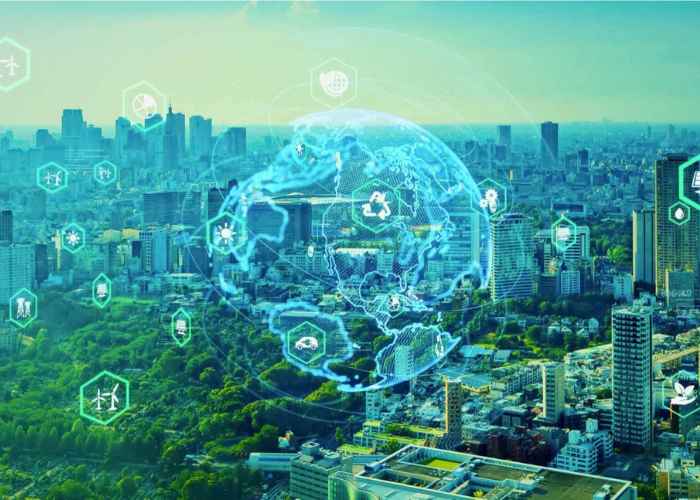“Zero emission” objective: geopolitical and technical challenges of the ecological transitionBY ANTONIO PICASSO
- 13 February 2024
- Posted by: Competere
- Category: Senza categoria

The great challenge of the ecological transition is affected by a series of geopolitical critical issues that concern technological innovation. Failure to resolve them could compromise the goal of a “zero emissions” world by 2050.
Article published in Italian on Agendadigitale.eu
Geopolitics of raw materials and technological innovation are the two channels along which the ecological transition runs.
Most of the world’s industrial superpowers share the ambition to achieve carbon neutrality. As many as 72 countries, representing around 80% of global emissions, have committed to reaching the “zero emissions” level.
THE WORLD TAKES THE ZERO EMISSION CHALLENGE
The European Union has also set 2050 as the deadline for achieving this goal. However, for capitalism to genuinely evolve into a model rediscovering the balance between man and the environment, it needs to incorporate factors that, until now, hindered its progress toward sustainable development targets.
According to the London-based think tank, Energy Transitions Commission (Etc), for Brussels to be on time and on target, it will require 15 times the amount of wind energy produced today, 25 times the solar energy it produces, as well as three times the size of the electricity grid which will have to satisfy the energy demand of a fleet of E-cars which is expected to be 60 times greater than the one in circulation today.
GEOPOLITICAL SPHERE: THE MOST INCIDENTAL INTERNATIONAL DOSSIERS
Despite these staggering figures, which might raise realistic doubts about how to achieve all this, it is evident that the international geopolitical scenario poses the primary obstacle to realizing our sustainability dreams.
Here are the most burdensome dossiers for the international community:
- Russia: with the war in Ukraine, the EU sanctions regime against the Putin regime has tightened. The “twelfth package” of restrictive measures, issued by Brussels at the end of December 2023, hits the cast iron sector, which is crucial for the automotive supply chain. The conflict seems to have no solution and our economy is the first to suffer;
- US vs EU duties on the import of steel and aluminum: Brussels has put its retaliatory measures on hold until March 2025, provided that Washington excludes products made in the EU from its duties. The parties prefer to wait for the result of the US presidential elections next November, and then decide whether to return to conflict or make peace;
- Middle East: the Gaza crisis has spread to the Red Sea, and the Yemeni Houthi rebels (Shiites in the pay of Iran) have turned into pirates and are now threatening to block international freight traffic between the Far East and the Mediterranean. In this case, it would not be a specific commodity that would be affected, but rather the transport carrier, with the consequence of also involving other raw materials. For example, agricultural ones (primarily palm oil)are equally strategic for our transformation industry.
STRUCTURAL CRITICAL ISSUES
Added to these emergencies are structural criticalities. The Brussels-Beijing relationship is at an all-time low. The exchange between the two powers is centuries old and has always been based on the binary model of the do ut des: Europe exports technological know-how in exchange for Asian raw materials. But A) Since Asia achieved its technological neutrality some time ago, what does it do with skills and products made in the EU? B) How can Europe deal with Beijing where the autocratic, sovereignist, and anti-business regime is increasingly rigid?
Finally, there is the issue of supplies from producing countries. Brussels has issued a series of regulations (Cbam and Eudr) that raise the standard of sustainability of imports. From the African connection to Chilean copper, passing through Indonesian and Malaysian palm oil and Argentine soy. All these products must, rightly, be ESG compliant upon their entry into EU territory. The problem is that businesses can only do with it. A lack of regulatory clarity (the EUDR) or customs blockade (the duties with Russia) can lead to a production blockade.
What’s more: trade policies are also slowing down. In negotiations with Mercosur, Buenos Aires acts as a funnel. Relations with Kenya were only unblocked before Christmas, while the Democratic Republic of Congo is close to voting.
THE TECHNOLOGICAL SPHERE: INFRASTRUCTURES AND CRITICAL RAW MATERIALS
The industrial conversion from renewable sources to more sustainable ones requires the installation of infrastructures made with materials of all types. Steel, aluminum, copper, nickel, cobalt, lithium, and graphite. These and many others fall into the macro category of critical raw materials.
How many do we need?
According to official forecasts from the International Energy Agency, a world with zero carbon emissions in 2050 will need 35 million tonnes of green metals per year. By 2030, the demand for copper and nickel could increase by 50-70%, that of cobalt and neodymium by 150%, and that of graphite and lithium by six-seven times. Adding aluminum and steel could result in a predicted demand surpassing 6.5 billion tonnes.
Furthermore, the ETC predicts that, by 2030, shortages could occur of such dimensions as to compromise the market. There would be a shortage of 10-15% for copper and 30-45% for nickel. When dwindling inventories push up prices, producers of semi-finished products will increase production, while producers of finished products will, on the one hand, use scarce materials more efficiently and, on the other, push costs down the line. Thus there will be
potential end customers who will not be able or will not want to pay such high prices and will be forced to exit the market. At that point, the ecological transition will be interrupted.
POSSIBLE SOLUTIONS: RECYCLING OF RAW MATERIALS AND NEW TECHNOLOGIES
Is it possible to avoid this scenario? Yes, when virtuous policies were to be applied in terms of:
- recycling of materials (scrap can find new life);
- new technologies, more efficient and sustainable, applied to the extractive sector (for industry) and to land consumption (for agriculture).
However, we navigate uncertainty. Many of the innovative processes, precisely because they are such, do not guarantee the claimed conditions of temporal and environmental sustainability. The opening of new mineral deposits, for example, requires massive efforts regarding human resources and nature that the current ideological-political trend would like to avoid.
We then need investments on a scale never seen before in history. Finance is not always willing to bet on blind operations. McKinsey estimates that annual capital spending in the mining sector will need to double to $300 billion to fill supply gaps by 2030. The industrial supply chains most susceptible to impact are also those blacklisted for their environmental consequences, and, as a result, any of their operations are rejected outright.
CONCLUSIONS
But the biggest obstacle is time. Digging new mines takes four to seven years for lithium, on average 17 for copper. We make calculations without considering bureaucratic slowdowns. And much less the low level of development of the producing countries. In 2030, two-thirds of the new commodity supply needed will originate from countries that ranked below 50th in the World Bank rankings in 2020. It will be challenging to do everything by 2050.

